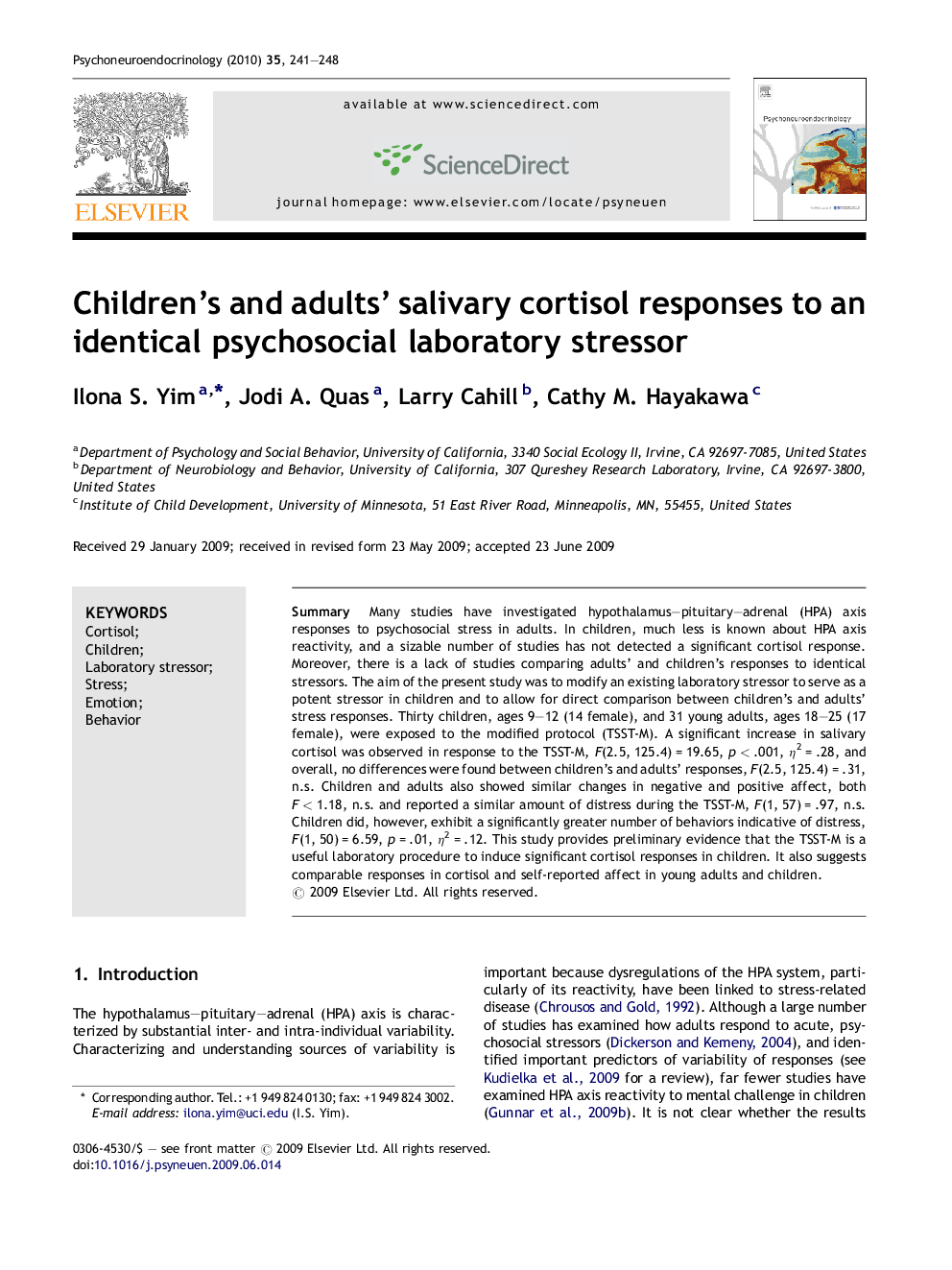| کد مقاله | کد نشریه | سال انتشار | مقاله انگلیسی | نسخه تمام متن |
|---|---|---|---|---|
| 336699 | 547189 | 2010 | 8 صفحه PDF | دانلود رایگان |

SummaryMany studies have investigated hypothalamus–pituitary–adrenal (HPA) axis responses to psychosocial stress in adults. In children, much less is known about HPA axis reactivity, and a sizable number of studies has not detected a significant cortisol response. Moreover, there is a lack of studies comparing adults’ and children's responses to identical stressors. The aim of the present study was to modify an existing laboratory stressor to serve as a potent stressor in children and to allow for direct comparison between children's and adults’ stress responses. Thirty children, ages 9–12 (14 female), and 31 young adults, ages 18–25 (17 female), were exposed to the modified protocol (TSST-M). A significant increase in salivary cortisol was observed in response to the TSST-M, F(2.5, 125.4) = 19.65, p < .001, η2 = .28, and overall, no differences were found between children's and adults’ responses, F(2.5, 125.4) = .31, n.s. Children and adults also showed similar changes in negative and positive affect, both F < 1.18, n.s. and reported a similar amount of distress during the TSST-M, F(1, 57) = .97, n.s. Children did, however, exhibit a significantly greater number of behaviors indicative of distress, F(1, 50) = 6.59, p = .01, η2 = .12. This study provides preliminary evidence that the TSST-M is a useful laboratory procedure to induce significant cortisol responses in children. It also suggests comparable responses in cortisol and self-reported affect in young adults and children.
Journal: Psychoneuroendocrinology - Volume 35, Issue 2, February 2010, Pages 241–248